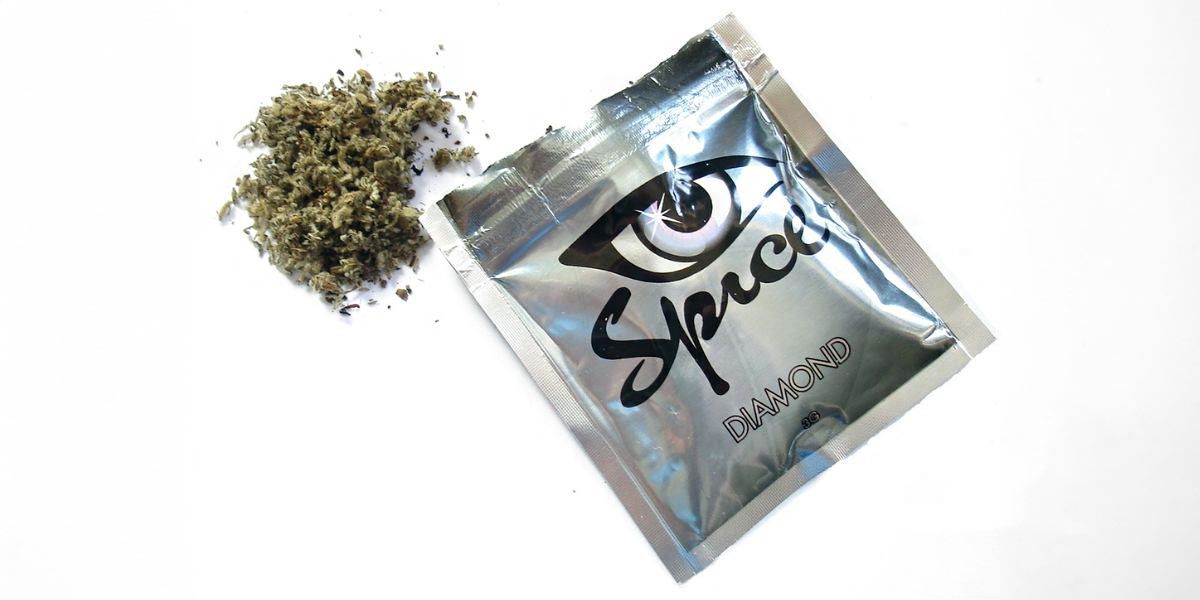What Are the Side Effects of Synthetic Marijuana Use?


The most well-known brand names for synthetic marijuana, or fake marijuana, include K2, Kush, and Spice. These names are commonly used interchangeably to refer to this drug that belongs to this new drug category called new psychoactive substances (NPS).
The brand name Kush references the famous cannabis strain “OG Kush” and other similar strains. This naming was deliberately chosen to mislead people into thinking the product was derived from the cannabis plant or the Kush strain. Kush has gradually evolved into a universal term, interchangeable with synthetic marijuana, K2, and Spice.
Although readily available and often marketed as a safe, legal substitute for marijuana, fake marijuana is fundamentally different. It does not originate from marijuana plants.
Synthetic marijuana belongs to a new classification of substances that are mind-altering and challenging to regulate. K2 or Kush is particularly popular among young adults because it often goes undetected by standard drug tests. However, it is significantly more potent and carries greater risks and more harmful effects compared to traditional marijuana.
What Is Synthetic Marijuana?
Synthetic cannabis consists of dried plant material coated with laboratory-synthesized chemicals known as synthetic cannabinoids, along with other unidentified chemicals.
Manufacturers use chemicals on plants and sell them under names such as Spice, K2, and Kush, and many other brands. They dry, package, and market these products. This end product is referred to as synthetic marijuana or fake weed.
These synthetic products are readily available at gas stations, head shops, and venues that offer herbal alternatives. They are frequently advertised as natural yet are labeled as not for human consumption.
What Are Synthetic Cannabinoids?
Synthetic cannabinoids are laboratory-created chemicals designed to replicate the naturally occurring cannabinoids found in the marijuana plant. Despite these substances striving to mimic the effects of natural cannabinoids, their structure and effect are notably distinct.
The truth is that synthetic cannabinoid products have little resemblance to actual marijuana. The chemical compounds in these fake substances interact with brain receptors in distinct ways. Consequently, the impacts of artificial marijuana can be highly unpredictable, varying from slightly unpleasant to possibly fatal.

Street Names for Synthetic Marijuana
Companies that produce synthetic marijuana, like Spice, K2, and Kush, have used legal loopholes to sell their products without getting caught by authorities. Consequently, there are numerous brand names and slang terms used to refer to synthetic marijuana.
At present, the Drug Enforcement Administration (DEA) recognizes the most common street names for synthetic marijuana as:
- Black Mamba
- Scooby Skunk
- Bliss
- K2
- Red X Dawn
- Fake weed
- Kronic
- Blaze
- Kush
- Bombay Blue
- K3
- Legal weed
- Purple Kush
- Zohai
- Spice
- Hindu Kush Mountain
- Snax
- Genie
Ingredients of Synthetic Marijuana
Synthetic marijuana is made up of a variety of substances that work together to produce its effects. It does not contain a specific chemical or active ingredient.
The federal government has banned the most common substances, yet manufacturers frequently alter their formulas to evade legal restrictions. They spray plants with a chemically synthesized active ingredient, then dry, chop, or dissolve them into a liquid.
The Centers for Disease Control and Prevention (CDC) says U.S. laws now ban all ingredients instead of single chemicals.
Similar to Kratom, the majority of synthetic marijuana originates from Asia and remains unregulated. As a result, the quantity of synthetic marijuana and other ingredients can differ significantly from one batch to another.
The CDC found that bath salts, also called Spice, are often used in synthetic cathinones. Additionally, the plant material in fake cannabis varies widely, including tea leaves, grass clippings, Indian warrior herb, lion’s ear plant, marshmallow leaves, and many other plant species. Some plants have mind-altering effects that can be harmful when mixed with synthetic cannabis.
What Does Synthetic Marijuana Look Like?
Fake marijuana looks like dried herbs, green and brown, to look like real marijuana. The texture and scent of K2/Kush can vary significantly with each batch.
Synthetic marijuana packaging is designed to be eye-catching with shiny, colorful foil, tins, and sometimes plastic bottles. It is also marked with a distinctive font that stands out.
Fake marijuana is occasionally available in liquid form for use in vape pens. It is also sold as potpourri or incense so that you can buy it without tobacco, THC, or CBD.
Short-Term Effects
Many users consume K2 and Kush, seeking effects similar to those of marijuana. However, synthetic marijuana tends to be inconsistent, leading to variable short-term effects.
People who have smoked fake marijuana have reported a range of effects, including:
- Feeling relaxed
- Enhanced mood
- Distorted reality or shifts in how reality is perceived
- False beliefs
- Visual or auditory illusions
- Severe anxiety
Side Effects of Synthetic Marijuana
Synthetic drugs exhibit side effects that differ from the substances they mimic. Research conducted by the National Institute on Drug Abuse (NIDA) has shown that Kush binds quickly and strongly to the brain. However, as mentioned earlier, each batch of Spice may contain varying ingredients, leading to dangerous and unpredictable effects that vary with each use.
The NIDA lists the most common adverse effects of synthetic cannabinoids as:
- Uneasiness
- Bewilderment
- Elevated pulse rate
- Regurgitation
- Suspicion
Long-Term Effects of Synthetic Marijuana
Artificial cannabis is a fairly recent compound, and studies on its enduring impacts are just starting to emerge. The consumption of psychoactive substances by the youth is especially concerning, given that human brains keep evolving until 25 years of age. Habitual use of K2/Kush may result in severe, long-lasting health issues and exacerbate any pre-existing mental health disorders.
According to the CDC, the long-term effects of synthetic marijuana use can include:
- Restlessness and annoyance
- Bewilderment
- Trouble focusing
- Delusions
- Brutal mental disorder
- Rash and hostile conduct
- Drowsiness
- Light-headedness
- Thoughts of suicide
- Respiratory problems
- Stomach or digestive issues
- Elevated pulse rate
- Muscular harm
- Cardiac arrest
- Renal failure
If you or someone you know experiences severe effects, it is crucial to seek medical advice or visit an emergency room immediately. Being transparent with healthcare professionals about the situation is essential for receiving proper treatment.
Synthetic Marijuana Withdrawal
Stopping synthetic marijuana use can lead to withdrawal symptoms that might appear immediately or several days after the last use.
Frequent consumers of artificial cannabis might suffer from withdrawal symptoms such as:
- Sleeplessness
- Delusions
- Nervousness
- Emotional fluctuations
- Throwing up
- Fast or uneven heart rate
- Renal impairment
- Cerebrovascular accident
- Angina
- Myocardial infarction
- Mortality
It’s important to speak with your healthcare provider before attempting to quit using a substance. Addiction can harm both your body and mind. This conversation can assist you in comprehending what to anticipate during the process.

Treatment for Synthetic Marijuana Addiction
Substance abuse and addiction may seem impossible to overcome, but there is help available for you or your loved one. White Oak Recovery Center provides personalized care— free from judgment, surrounded by compassion, and aimed at facilitating meaningful, lasting recovery.
We care about the well-being and safety of our residents; therefore, we carefully select our highly qualified medical professionals and provide medically supervised detox. Our evidence-based treatment programs are designed to heal the whole person, not just the addiction.
White Oak Recovery Center provides a tranquil sanctuary with contemporary facilities, freshly catered meals served daily, and therapeutic recreational activities.
Our treatment specialists are eager to assist you in taking the first step towards a better life. Take action to recover and contact us today.

Am I covered for addiction treatment?
Your insurance may cover treatment. Call now for an entirely free and confidential assessment. Recovery starts with a phone call.

- “K2/Spice.” Drug Enforcement Administration, Oct. 2022
- “Synthetic Cannabinoids.” National Institute on Drug Abuse, Oct. 2023.
- “Synthetic Marijuana Can Be Deadly.” Department of Behavioral Health, 2024.
- “Synthetic Marijuana.” Department of Health: New York State, Dec. 2015.
Medical Disclaimer:







